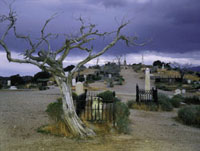Epson Expresion 1600 Scanner
Brand names like Kodak, Nikon, and Polaroid are automatically associated with photography, but Epson? Well if Epson's latest products are any indication of the company's direction their name will soon become synonymous with digital photography. With their newest scanner, the Epson Expression 1600, two of the model variations are most apparently designed with features a photographer will appreciate. In fact this new scanner is so on target in respect of the demands of the digital darkroom, I'd swear the design team grew up with lifetime subscriptions to Shutterbug. The Expression 800, which I reported on not much more than a year ago, is the starting point for this new 1600 version of Epson's Expression scanners. The 800 was a very good scanner for digital photography at the time, as well as for the price point at which it was offered. This new version's improvements make it better by at least double in many important categories. Expression 1600 Features. To begin with this new Expression has twice the optical resolution, from 800 to 1600dpi, which is further doubled in hardware to 3200dpi by MicroStep Technology, and the interpolated maximum resolution is taken to 12,800dpi. This very useful level of hardware resolution is backed up in color depth of scanning at 12 bits per RGB channel (36 bit) with 36-bit and 24-bit output. And, a 3.3 Dmax dynamic scanning range assures good quality scans of transparency film. Both the Pro and Pro FireWire models come with a TPU for film scanning. This featured photo use has been made easier and more effective with the combination of a new dual-focus capability which raises the film scanning focus plane 2.5mm above the scanner's glass surface, and new film holders for all popular film formats which positions the film surface exactly 2.5mm above the glass, assuring sharp focus and avoiding Newton rings. |
|||
In addition to the traditional scanner interface of a SCSI 2 connection, the 1600 also features a USB connector, and the Pro FireWire has the high-speed FireWire model connection that's native to G3/G4 PowerMac computers. For those with PCs who want to take advantage of FireWire, an accessory extra-cost FireWire interface is available with the Pro FireWire model. With all three of the connections to interface the Expression 1600 with a computer, the performance is very fast, much faster than any scanner in its class I've used to date. This includes making a preview, doing the final scan, and including the processing and transfering of the information to the host computer. The Expression 1600 is a very cost effective performance package, especially considering the software bundle offered with the Artist, Pro, and Pro FireWire models. Besides the Epson Twain Pro driver, the software bundle includes TWAIN Pro for networks, Monaco EZ Color 1.5, Adobe Photoshop 5.0 LE, TextBridge Classic, and Newsoft Presto! Page-Manager. Working With The Expression 1600. After an easy and faultless install on my Mac G3 and PC with Windows 2000, I first set about after installing Monaco EZ Color 1.5 to upgrade my monitor calibration and produce custom profiles for the scanner and printer to match all three devices to assure obtaining predictable color throughout. This software color management utility if purchased separately at its list of $299 is worth that investment in the value it offers. In addition to providing the ability to fine-tune the color performance of your entire system from input to output, it also supports the same kind of control so you can use other brands and types of printing paper including 100 percent rag fine arts archival media. For my scan tests I chose color prints, black and white film, as well as color negatives and transparencies to scan including mostly 6x4.5cm 120 film images. Besides having more images made in this format excepting 35mm than any other, I scanned mostly this size because it is the smallest film size from which to expect to make 11x14 or larger prints based on the scanner's hardware resolution. |
|||
I scanned about half of the images with the Expression 1600 connected to my Windows 2000 PC using the Epson Twain Pro driver, and a few images using the Epson driver with my Mac and the remaining ones with the LaserSoft SilverFast Ai 4 driver. The Epson Twain Pro driver is now even simpler to use, and with much improved automatic scan adjustment. In fact the easiest way to use the Twain Pro driver is to set it to make the scan adjustment automatically and then use the manual adjustment only if you want to alter that interpretation to pick up more or less detail in highlights and shadows, adjust the brightness level of one level of tonal range in the image, or make a selected tone more neutral or move the saturation level up or down. Most of the 645 film scans were from transparencies, but a few color negatives were included as well as some in 6x7 and 6x9cm sizes. The 645 scans were mostly made at 1600dpi, while a few were made at a higher setting to result in a 12x16" print size at 300dpi, the same print size I scanned the 6x7 and 6x9 frame sizes to. Immediately after my scanning was completed for each session, I opened the images in Photoshop first to tweak the color correction if need be, and then retouch any dust and scratches. In this processing I found the scans required little or no tweaking, although I made some local area adjustments in tone and color to correct faults in the image on the original. When I zoomed in to retouch the images I noticed in the 645 images scanned at the higher resolution some artifacts, a kind of diagonal pattern at pixel level in some areas of tone transition. At the time I was concerned, but after making some test prints, a few of which were made on 13x19" paper which reproduced the film image very well, my concern faded. Evaluation And Recommendation. In the last couple of years or so I've had the opportunity to use some very good flat-bed scanners that support film scanning. The Epson Expression 1600 is the first affordable consumer product I've experienced that produces consistent scan quality from medium and large format film capable of making large prints, easily and efficiently. The combination of the two-level focus and very effective film holders that avoid Newton rings, combined with the quick preview, rapid scan speed, and equally fast data transfer to the host computer, made the number of good scans I could produce exceptionally high. |
|||
Although 35mm is by far the most popular format among all camera users, I believe those enthusiasts interested in putting together a digital darkroom include a large number of photographers using medium and even large format cameras if not exclusively, then in addition to 35mm. For these individuals, many of whom I am hearing from in web forums, by e-mail and letter, what they say they need is most effectively and affordably provided by a flat-bed scanner with a film scanning accessory. The Epson Expression 1600 hits the mark exactly by providing the features and performance necessary to being the key component to the kind of digital darkroom that will work for most. For more information, call
(800) 463-7766, or visit Epson's web site at: www.epson.com |
|||
Technical Specifications Type: Flat-bed color
image scanner |
- Log in or register to post comments






































